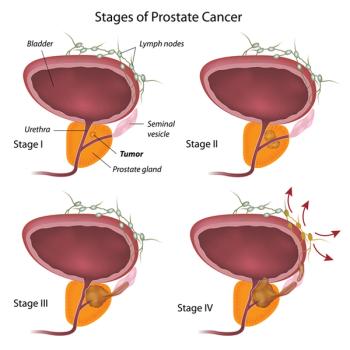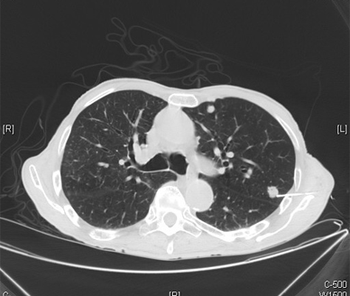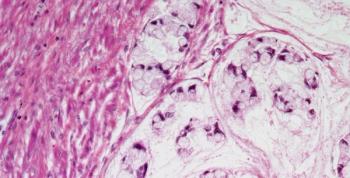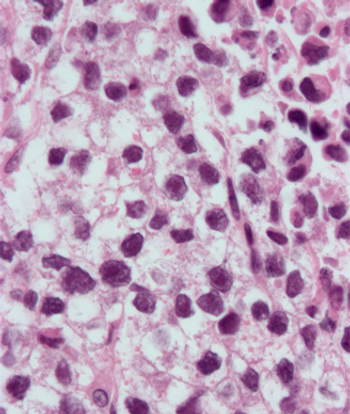
Intermediate-risk prostate cancer patients managed with surveillance had worse outcomes compared with low-risk prostate cancer patients managed with surveillance.

Your AI-Trained Oncology Knowledge Connection!


Intermediate-risk prostate cancer patients managed with surveillance had worse outcomes compared with low-risk prostate cancer patients managed with surveillance.

High-dose radiation therapy did not improve overall survival compared with the standard dose in stage II localized prostate cancer, but did show some benefits.

This slide show features pathology slides and PET/CT scans of prostate cancer, as well as various images of bone lesions from metastatic disease.

This slide show features various images of papillary, clear cell, chromophobe, and tubulocystic renal cell carcinoma.

A large retrospective analysis suggests the number of patients diagnosed with intermediate- and high-risk prostate cancer has increased since 2011.

Levels of AR-V7 in metastatic castration-resistant prostate cancer patients could guide physicians to treat with either taxanes or enzalutamide/abiraterone.

Patients with a history of testicular cancer had a fivefold higher risk of developing aggressive prostate cancer when compared with those with no history of testicular cancer.

A 54-year-old man is found to have an enlarged prostate. Based on the biopsy shown, what is your diagnosis?

An 8-year analysis confirmed that adding radiotherapy to androgen deprivation therapy in prostate cancer improved patient overall survival by more than a year.

This article summarizes the existing literature on use of radiotherapy for node-positive prostate cancer, as well as the associated outcomes.

We are in urgent need of a randomized trial comparing radiation plus ADT vs ADT alone for men with node-positive prostate cancer.

Despite the lack of level 1 evidence, retrospective studies support the need for appropriate local treatment, even in the context of node-positive disease.

A 72-year-old man is found to have a bladder mass. After further evaluation, a biopsy is performed. What is your diagnosis?

A targeted magnetic resonance/ultrasound fusion–guided biopsy technique produced better results than a standard biopsy for detecting high-risk prostate cancer.

A urine test (CellDetect) was able to detect disease recurrence in bladder cancer patients, with a reported sensitivity of 84.4% and specificity of 82.7%.

Active surveillance is effective and yields good outcomes in patients with clinical stage I testicular cancer who underwent orchiectomy.

Prostate cancer patients who smoke may be more susceptible to complications from treatment, and have increased risk of side effects and disease recurrence.

Group exercise programs can improve the physical and mental well-being of prostate cancer patients, as well as providing emotional and social support.

As a variety of new hormonal agents are increasing survival times for men with metastatic disease, it is becoming increasingly important to consider cardiovascular, renal, and other potentially more serious risks associated with long-term ADT, especially in an aging population.

The problem with large sets of data is the risk of the “GIGO” principle-viz. garbage in, garbage out-and it requires a very careful and thoughtful investigator to rule out the many errors of large-scale data capture.

This article reviews recent evidence suggesting an increased risk of pneumonia, cardiovascular disease, and acute kidney injury in men treated with ADT and consider whether the incidence of such events differs with the treatment modality.

A full-term infant presents with abdominal distention and enlarged kidneys. After further evaluation, a biopsy is performed. What is your diagnosis?

A small study found that testosterone may suppress the growth of some advanced prostate cancers and could reverse resistance to testosterone-blocking agents.

Older men who received radiotherapy in addition to ADT had fewer deaths from their locally advanced prostate cancer compared with those treated with ADT alone.

While observation may be appropriate for select cases where prognosis is poor, rates of non-treatment are unacceptably high in muscle-invasive bladder cancer.